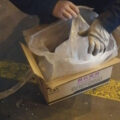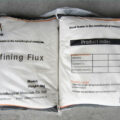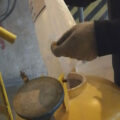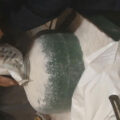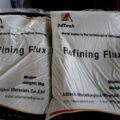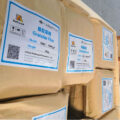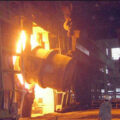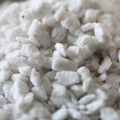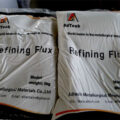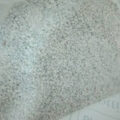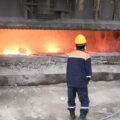Furnace cleaning flux is used to clean the hard slagging of the furnace, furnace wall, and bottom after aluminum and aluminum alloy smelting. The accumulation on the inner wall of the refractory material of the reverberatory furnace not only reduces the life of the refractory material, but also reduces the volume of the furnace, which makes the flow of aluminum liquid difficult. Furnace cleaning agent realizes the continuous production of aluminum alloy, improves the quality and output of aluminum alloy, prolongs the service life of the furnace body, reduces the labor intensity of manual furnace cleaning, and is used in the kilns of many series of aluminum alloy products.

Furnace cleaning agent is white (slightly gray) powdery fine particles, the main components are chlorine salt and fluoride salt, and other compounds. After proper heating and sieving, the particle size is uniform, and the refining tank is sprayed with gas Hard slagging in the hearth, furnace wall and bottom of the furnace can meet the cleaning and use of many series of alloy furnaces.
Slag is formed in the melt without furnace cleaning flux during processing and has a high aluminum content, usually 80 x 95%. The density of the slag is small and the aluminum content is 15% 35%.
If the melt is not treated with flux, the oxide can damage the furnace wall of the lining. There are always microcracks in V-type baking varnish. The oxides in the melt adhere to the furnace wall and some of them penetrate into the microcracks. During the crystallization process of corundum, oxidation may occur according to time and temperature, which will lead to lining fracture. When the corundum became too much, he also began to fall and melt.
If aluminum melt flux processing is carried out in a furnace, the accumulation of oxides on the furnace stack will be quite different.
After using the solvent, there is only a small connection between the slag and the lining. Moreover, it is very important that there is no crystallization of corundum oxide in this case. When the slag is removed from the melt surface, it is easy to remove the friable oxides attached to the furnace wall.
There is a special set of exothermic fluxes based on nitrate. The exothermic reaction between aluminum and nitrate occurs with the increase of temperature. Under the influence of this high temperature, the viscosity of aluminum is very low, so it is easy to flow out of the slag. The disadvantage here is that the low metal content in the slag is achieved by forming additional oxides in the melt.

